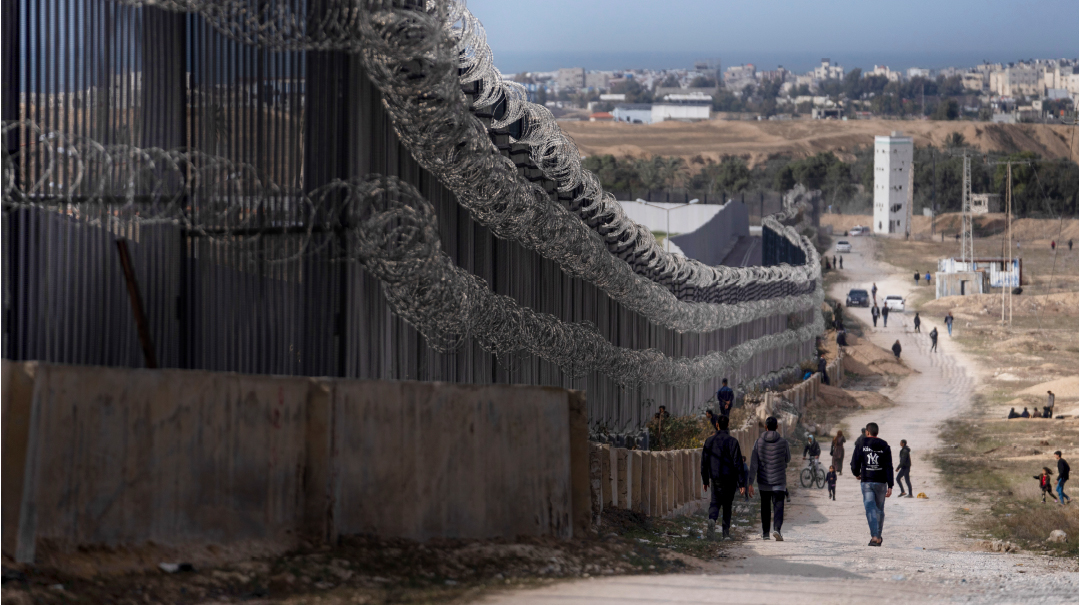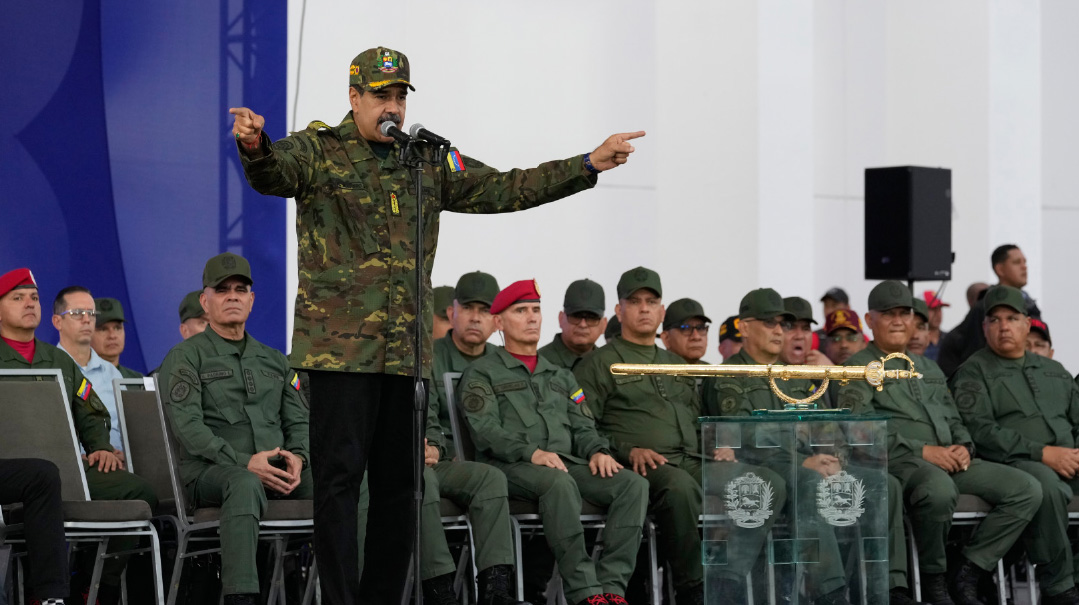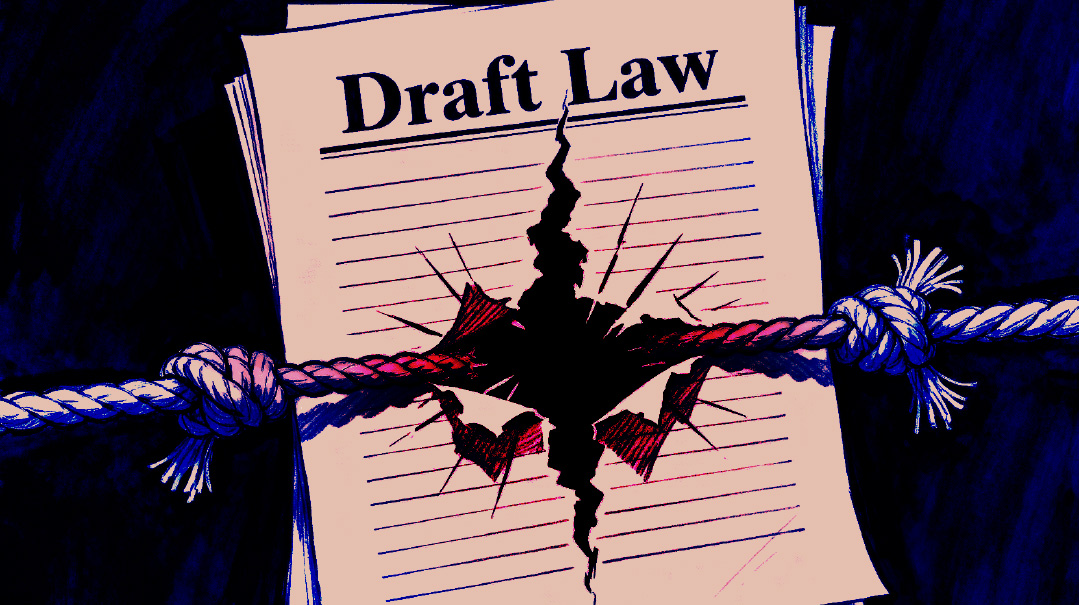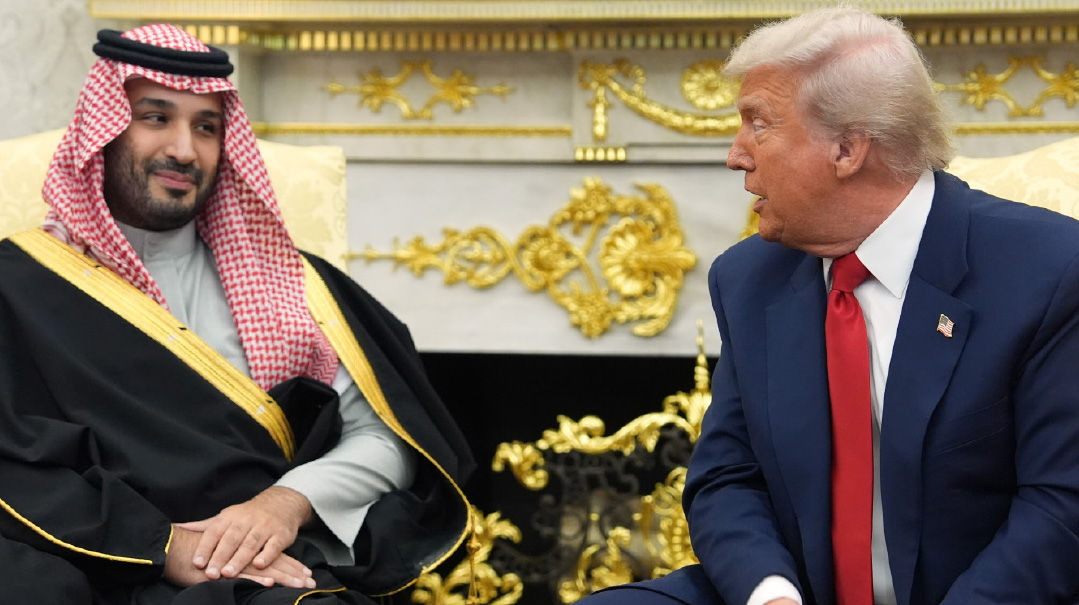Hamas Lifeline
| January 23, 2024Now that Israel has identified the problem, what will it do to ensure the weapons valve stays shut?

Photos: AP Images
The Philadelphi Corridor separating Egypt from Gaza has proved a boon to Hamas over the years, serving as a passage for smuggling in vast amounts of arms and ammunition. Now that Israel has identified the problem, what will it do to ensure the weapons valve stays shut?
T
he nine-mile-long strip of land separating the Gaza Strip from Egypt’s Sinai Peninsula has long been a strategic thorn in Israel’s side. And now it appears that the border passage, code-named the “Philadelphi Corridor” by the IDF, played an important role in the October 7 Hamas attacks.
One of the security establishment’s biggest surprises in the aftermath of Simchas Torah was the sheer amount of ammunition used by the Nukhba terrorists. The attackers infiltrated Israel armed to the teeth, with enough guns and bullets to arm a military brigade.
Three weeks later, with the start of its ground offensive, the IDF began uncovering the enormous stockpile of arms and ammunition built up by Hamas for decades under Israel’s very nose.
Munitions were discovered in every house — in children’s rooms, closets, bedding boxes, and even toilets.
All of it, down to the last bullet, came over the Philadelphi Corridor, the border between the Gaza Strip and Egypt. Ostensibly, the Egyptian army secures the crossing to prevent the movement of illegal materials and persons into the Strip. But in practice, the situation is completely different.
Israel now understands that seizing control of the corridor is the only way to prevent Hamas from rearming and growing again into the terrorist army that overwhelmed Israel’s border defenses on the morning of Simchas Torah.
Gaza’s First Tunnels
The Philadelphi Corridor (the name is similar to the city in Pennsylvania but missing the final A) runs along the length of the border between Egypt’s Sinai and the Gaza Strip. A road was constructed along the corridor to facilitate border patrols. The Rafah border crossing along the route is Gaza’s main entry point from Egypt, and its primary link to the outside world.
Israel became acquainted with the Philadelphi Corridor during the Six Day War, when Palestinian forces opened fire at communities in the western Negev from the Gaza Strip. A short time later, the decision was made to conquer the Gaza Strip, including the strategic corridor. The man who gave the order to occupy Gaza was Maj. Gen. (res.) Yeshayahu (“Shaike”) Gavish, who served as the head of the Southern Command during the war and led Israel to victory over the Egyptians.
In a conversation with Mishpacha, Gavish says, “The original plan of action was to attack the Egyptian army in Sinai, with its 1,300 tanks and seven divisions, without entering the Gaza Strip.”
The change of plans took place shortly after Israel broke into the Sinai. “In the initial stage of the war, I received a report that two Palestinian brigades stationed in the Gaza Strip had begun shelling the nearby communities in Israel. I sent a message to Chief of Staff Yitzchak Rabin requesting permission to conquer the Strip. ‘While we fight in the Sinai, they’re hitting our communities from behind,’ I told him. He immediately approved action on the Gaza problem.”
That battle looked very different from the battles taking place in the Gaza Strip today. A single IDF brigade, assisted by a tank battalion, was sent into the Strip, and within two days the entire Strip was occupied as far as the Philadelphi Route.
Philadelphi first assumed political importance after the Yom Kippur War, when Israel and Egypt began negotiating peace in exchange for Israel’s withdrawal from the Sinai. As part of the talks, Egypt demanded that the border between the two countries follow the Taba-Rafah Line, the old border between the British and Ottoman empires set in 1906. Israel agreed.
In the years following Israel’s withdrawal from Sinai, Israel erected a border fence along the corridor. It wasn’t long before Gazans began looking for ways to bypass the fence. At first, people jumped the fence or threw bundles over, but in 1987, the locals changed track and adopted a course destined to become Palestinian terrorist groups’ modus operandi: digging tunnels under the fence.
Initially, the tunnels were only used for smuggling in people and goods, but the line between civilian and terrorist activity in the Gaza Strip is blurry, and arms and ammunition were soon flowing through the tunnels. As a result, the IDF began investing in efforts to expose the tunnels under Philadelphi. Despite the fact that the corridor is only nine miles (14 kilometers) long, success was limited.
Over time, the Philadelphi Corridor became a fiercely contested battlefield where Palestinian terrorists fired hundreds of rockets and anti-tank missiles, detonated hundreds of IEDs, and carried out thousands of shooting attacks on IDF forces and posts. The defense establishment took action, demolishing houses and establishing outposts along the route. In 2004, Israel launched Operation Rainbow to secure the route, in response to an incident in which terrorists hit an IDF armored personnel carrier that was locating tunnels on Philadelphi, killing five soldiers.
The most prominent attack on the route took place on December 12, 2004, when an Israeli military post was destroyed by the detonation of a booby-trapped tunnel dug under the outpost. Five soldiers from the Bedouin patrol battalion were killed in the incident.
Strategic Blunder
The repeated clashes and deaths on the route wore on the Israeli public. Widespread public opposition to the continued occupation of Gaza allowed Prime Minister Ariel Sharon to lead the 2005 disengagement plan from the Gaza Strip. As part of the controversial plan, the IDF withdrew from the strategic corridor in tandem with the evacuation of Gush Katif and other Jewish communities in the Gaza Strip.
In command of the withdrawal operation was Maj. Gen. (res.) Gershon Hacohen, then commander of the Ga’ash Division. Speaking to Mishpacha, Hacohen reflects, “Throughout the entire process, I thought the withdrawal was a mistake. I believed it would go down as a historic calamity. I didn’t hide this position, but repeated again and again that we would not be able to defend ourselves after the withdrawal. I don’t think there was anyone in the General Staff who wasn’t familiar with my view on the matter. Unfortunately, it turns out I was right.”
Following the disengagement, the warnings of Hacohen and others materialized: The terrorist factions in the Gaza Strip began arming on a scale never seen before. Actually, Israel found out about the ammunition supplies coming in through the Philadelphi route soon after the disengagement, but was lulled by the temporary quiet brought about by the withdrawal from Gaza. By the end of 2005, some three months after the disengagement was completed, the Shin Bet’s annual report described a dramatic increase in the number of arms and weapons smuggled from Egypt into the Gaza Strip, including some 200 anti-tank missile launchers and about 350 anti-tank missiles.
Less than two years later, Hamas took control of the Gaza Strip and launched a massive armaments program, making extensive use of the wide-open crossing. Sixteen years later, Israel paid the price, when a virtual army broke through its borders and perpetrated the worst terrorist attack in the history of the state.
Main Power Switch
One hundred days after the outbreak of the war, the importance of occupying the Philadelphi Corridor is becoming ever clearer.
“Cutting off the Gaza Strip from Egypt is a critical element of the operation,” Hacohen says. “I believe it will eventually happen, because if we don’t close off Philadelphi, Hamas will rise again. This route is like the main power switch. Even if we disarm the Gaza Strip house-by-house, the route will continue to resupply the terrorist organizations with arms and ammunition.”
Hacohen says the Philadelphi crossing was instrumental to Hamas’s buildup.
“A wealth of armaments entered the Gaza Strip through Philadelphi, including materials for digging tunnels. In the end, there’s a limit to Hamas’s local production capabilities, and it needed an enormous amount of raw materials for both weapons and tunnel construction.
“The Philadelphi Route,” Hacohen continues, “is also the main exit route from the Gaza Strip. Many of Hamas’s fighters left to Iran for training via the Philadelphi route.”
He is sanguine about the challenges facing Israel if it wants to reconquer the corridor.
“Operationally, Israel has the capabilities. The problems Israel faces are mainly political. There are around a million people in and around Rafah, many of them refugees from the north living out in the street. Then there’s Egypt, which won’t accept Israeli control of the corridor. There are sensitivities here, but I think the IDF will find a way to overcome them.”
Back to Egypt
In the security and political establishments, many blame the events in the Gaza Strip on the Egyptians, who have turned a blind eye to the arms smuggling through the Philadelphi Corridor.
In fact, it was only the Arab Spring that led to a slight change in Egypt’s policy toward the corridor. This happened after the collapse of the Libyan army, which flooded the Gaza Strip with arms while undermining the security situation in the Sinai. That’s when the Egyptians realized they had to take action against the arms trade.
Egypt’s peak action against the smuggling tunnels along the Philadelphi route was recorded in 2014–15, when the Egyptian government established a buffer zone about 500 meters wide the length of the border. Subsequently, the Egyptians flooded the Hamas tunnels via fish ponds dug near the border.
In a conversation with Maj. Gen. (res.) Uzi Dayan, CEO of the Mivtachei Yisrael NGO and former IDF deputy chief of staff, he tells us that Israel can’t rely on Egypt when it comes to securing the border with the Gaza Strip.
“They’re playing a double game,” he says.
Dayan has his suspicions about what’s behind the Egyptian resistance to the Israeli occupation of the Philadelphi Route.
“It’s very possible that they’re afraid we’ll discover exactly what transpired during the years when we didn’t control the corridor,” he says. “In addition, the Egyptians don’t want to control Gaza but do want a border with the Gaza Strip, which gives them power and influence.”
And it seems that Israel does intend to change the strategic situation on the corridor. According to a report in the Wall Street Journal, Israel recently notified Egypt that it intends to reoccupy the Philadelphi Corridor. According to another report, Israel has no interest in controlling the corridor on the ground, but plans to install sensors along it in cooperation with Egypt. According to the same report, Israel asked the Egyptians to install a network of sensors along the border to detect any potential attempt by Hamas to reopen the smuggling route after the war. Israel also requested approval to send reconnaissance drones to the area, which Egypt denied.
According to a Channel 12 report, the Philadelphi issue is leading to tension between members of the emergency government. Defense Minister Benny Gantz recently submitted a list of demands to Prime Minister Binyamin Netanyahu and the National Security Council that includes seven critical points regarding the continuation of the war. At the top of Gantz’s list is the issue of the Rafah crossing, as well as the nature of the mechanism that will prevent smuggling into the Gaza Strip.
What will be the future of the Philadelphi Corridor after the war? Judging by Netanyahu’s recent remarks, the route must be under Israeli control. But questions remain: If Netanyahu is so firm, why is Gantz demanding answers about the future of the corridor, and why the conflicting reports on the matter?
Whatever the domestic political calculus, Uzi Dayan believes one player shouldn’t factor into the equation. “Egypt’s opposition to the Philadelphi occupation stems from its basic hostility toward the State of Israel, alongside their desire to weaken Israel through Hamas. Israel shouldn’t take Egypt into account at all, because this is not Egyptian territory. It’s controlled by Hamas.”
(Originally featured in Mishpacha, Issue 996)
Oops! We could not locate your form.







